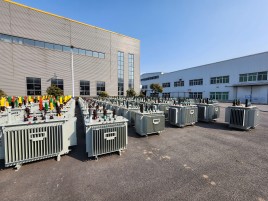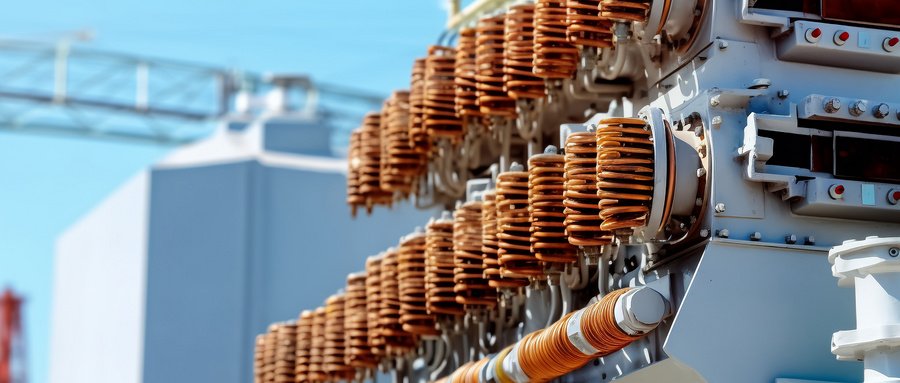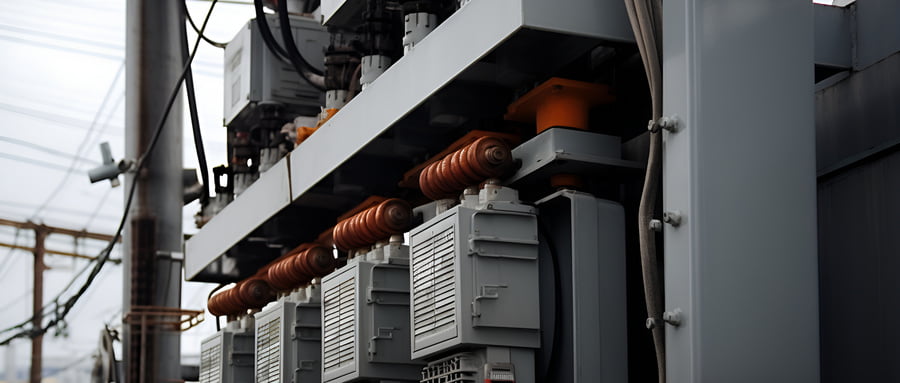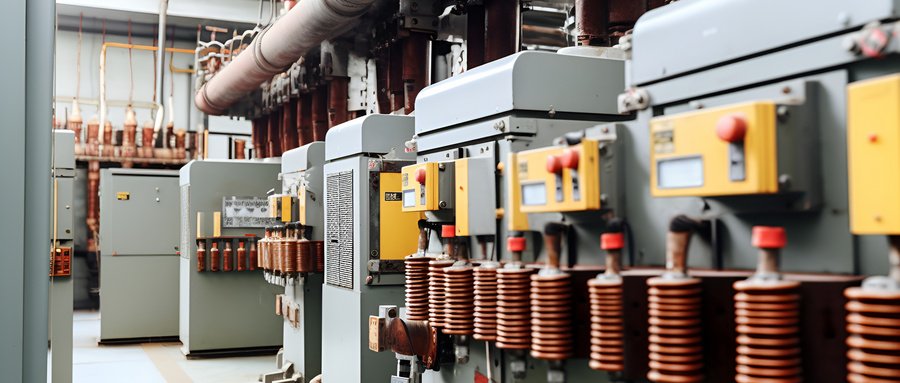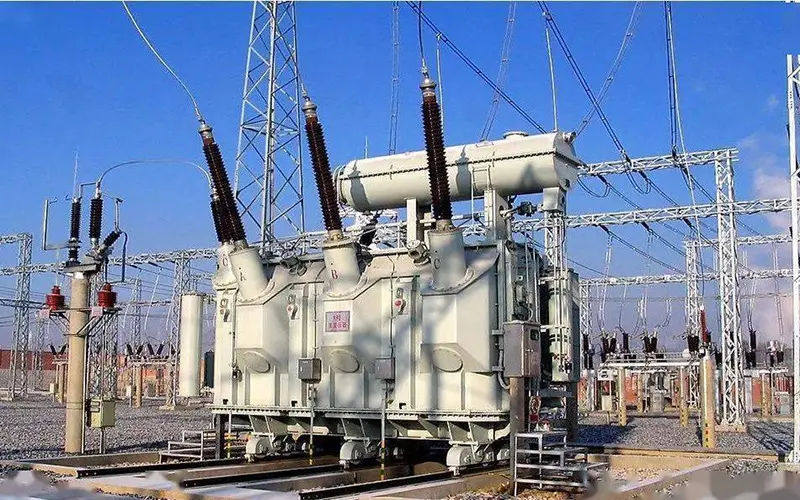A dry-type transformer refers to a power transformer whose core and winding are not immersed in insulating oil and adopts natural cooling or air cooling. As a late-emerging power distribution equipment, it has been widely used in power transmission and transformation systems in factory workshops, high-rise buildings, commercial centers, airports, docks, subways, oil platforms, and other places, and can be combined with switch cabinets to form a compact complete substation.
At present, most of my country’s dry-type power transformers are three-phase solid-molded SC series, such as SCB9 series three-phase winding transformers, SCB10 series three-phase foil transformers SCB9 series three-phase foil transformers. Its voltage level is generally in the range of 6-35KV, and the maximum capacity can reach 25MVA. For dry-type transformers, do you want to know more? The following Xianji.com editor will introduce in detail the structural form, cooling method, type, and advantages of dry-type transformers compared with oil-immersed transformers. Installation and debugging, how to judge faults from sound, noise caused by external structure and solutions, and selection points. Let’s take a look!
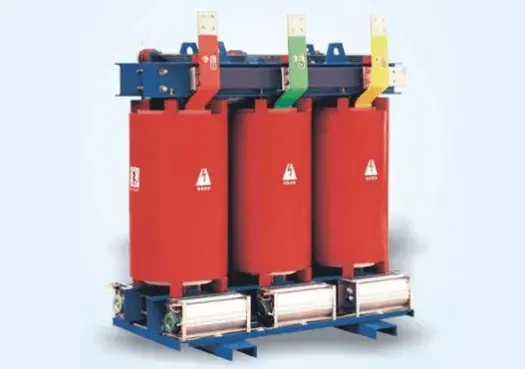
■ The structure of dry-type transformer
1、Open type: It is a commonly used form. Its body is in direct contact with the atmosphere. It is suitable for relatively dry and clean indoor environments (when the ambient temperature is 20 degrees, the relative humidity should not exceed 85%). Generally, there are two cooling methods: air self-cooling and wind cooling.
2、Closed type: The body is in a closed shell and is not in direct contact with the atmosphere (due to poor sealing and heat dissipation conditions, it is mainly used in mining and is explosion-proof).
3. Casting type: Epoxy resin or other resin casting is used as the main insulation. It has a simple structure and small size and is suitable for transformers with smaller capacities.
■ Cooling method of dry-type transformer
The cooling methods of dry-type transformers are divided into natural air cooling (AN) and forced air cooling (AF). In natural air cooling, the transformer can operate continuously for a long time at rated capacity. In forced air cooling, the transformer output capacity can be increased by 50%. It is suitable for intermittent overload operation or emergency overload operation; because the load loss and impedance voltage increase is large during overload, it is in a non-economic operation state, so it should not be kept in long-term continuous overload operation.
■ Types of dry-type transformers
1、Impregnated air-insulated dry-type transformer: Currently, it is rarely used. Winding conductor insulation and insulation structure materials are selected from insulation materials of different heat-resistant grades according to the needs to make B-class, F-class, and H-class insulation dry-type transformers.
2、Epoxy resin cast dry-type transformer:
The insulation materials used are polyester resin and epoxy resin. Currently, epoxy resin is mostly used in cast insulation dry-type power transformers.
3、 Wrap insulation dry-type transformer:
Wrap insulation dry-type transformer is also a kind of resin insulation. Currently, there are few manufacturers.
4、Composite insulation dry-type transformer:
(1) High-voltage winding adopts cast insulation, and low-voltage winding adopts impregnated insulation;
(2) High voltage adopts cast insulation, and low voltage adopts foil winding wound with copper foil or aluminum foil.
■ What are the advantages of dry-type transformers compared with oil-immersed transformers?
1、Dry-type power transformers can avoid the danger of fire and explosion of transformer oil due to failures during operation. Since the insulation materials of dry-type transformers are all flame-retardant materials, even if the transformer fails during operation and causes a fire or there is an external fire source, the fire will not be expanded.
2、Dry-type power transformers will not have oil leakage problems like oil-immersed transformers, and there will be no problems such as transformer oil aging. Usually, the operation, maintenance, and overhaul workload of dry-type power transformers is greatly reduced, and even maintenance-free.
3、Dry-type power transformers are generally indoor devices, and can also be made outdoors for places with special requirements. It can be installed in the same room with the switch cabinet to reduce the installation area.
4、 Since dry-type power transformers are oil-free, they have fewer accessories, no oil storage cabinets, safety airways, a large number of valves and other components, and no sealing problems.
■ Common problems and hazards in the operation of dry-type transformers
Operating environment
1、The grid of the air inlet of the transformer room is blocked; there is a lot of dust in the transformer room; there is a lot of dust on the heat dissipation holes of the transformer shell; this will lead to poor heat dissipation and excessively high operating temperature of the transformer in operation.
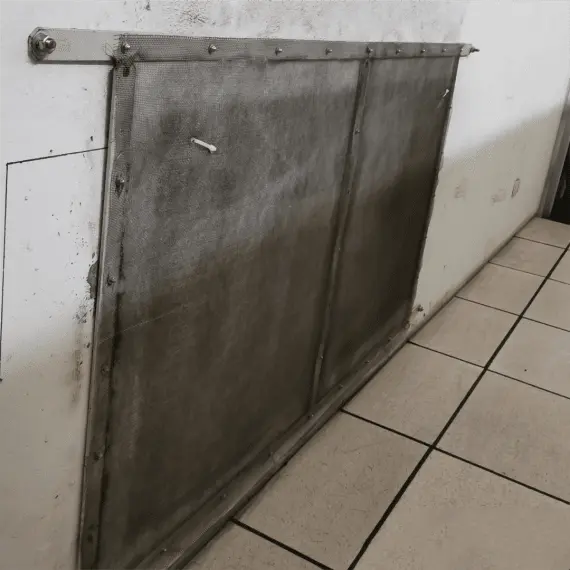
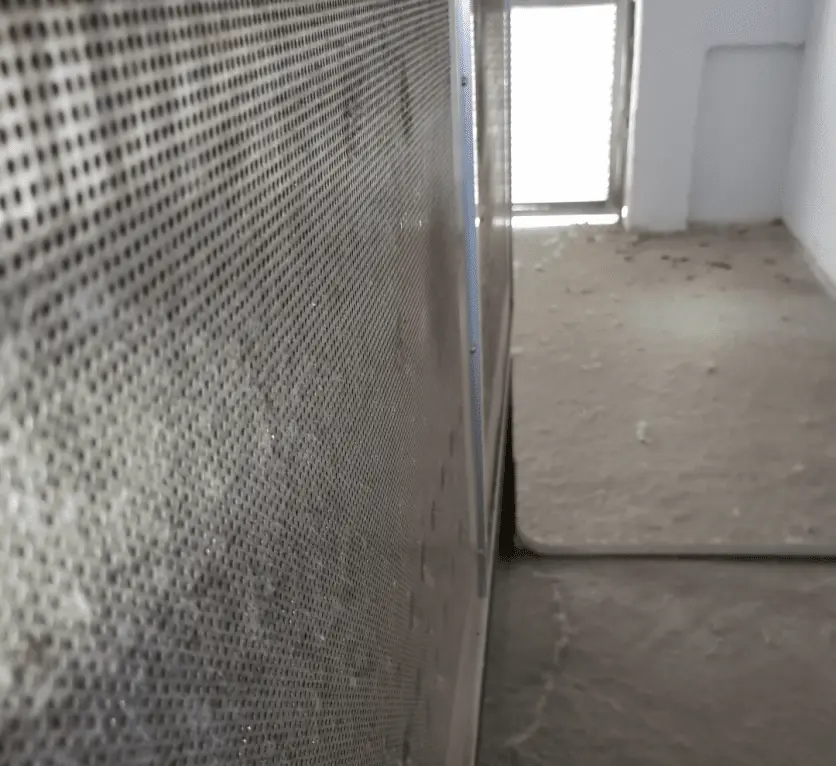

2、 The air outlet of a suspended air conditioner cannot be directly facing the transformer, as the condensed water from the air conditioner will drip onto the transformer and easily cause discharge.
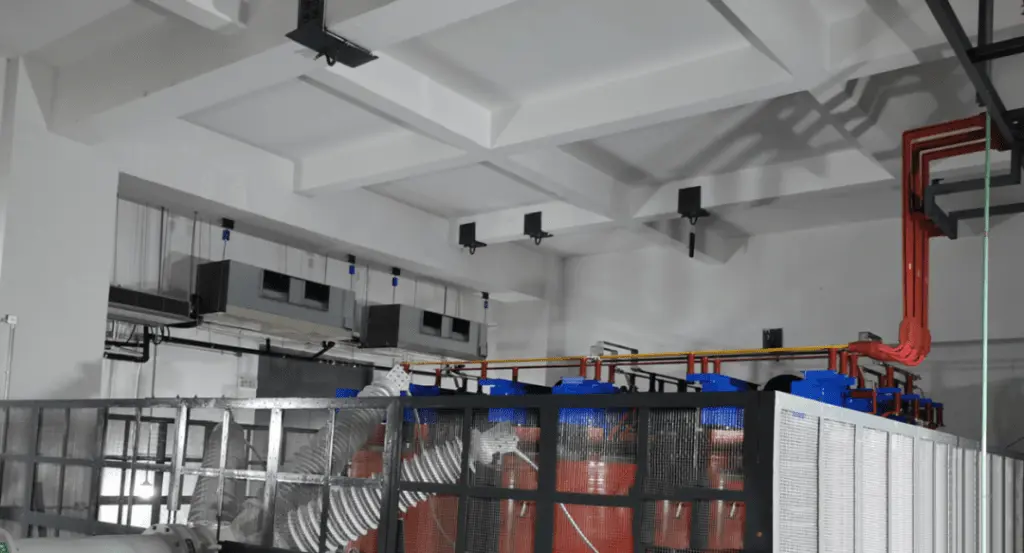

3、The high-voltage incoming cable trench needs to be sealed and moisture-proof to prevent small animals from entering the transformer.
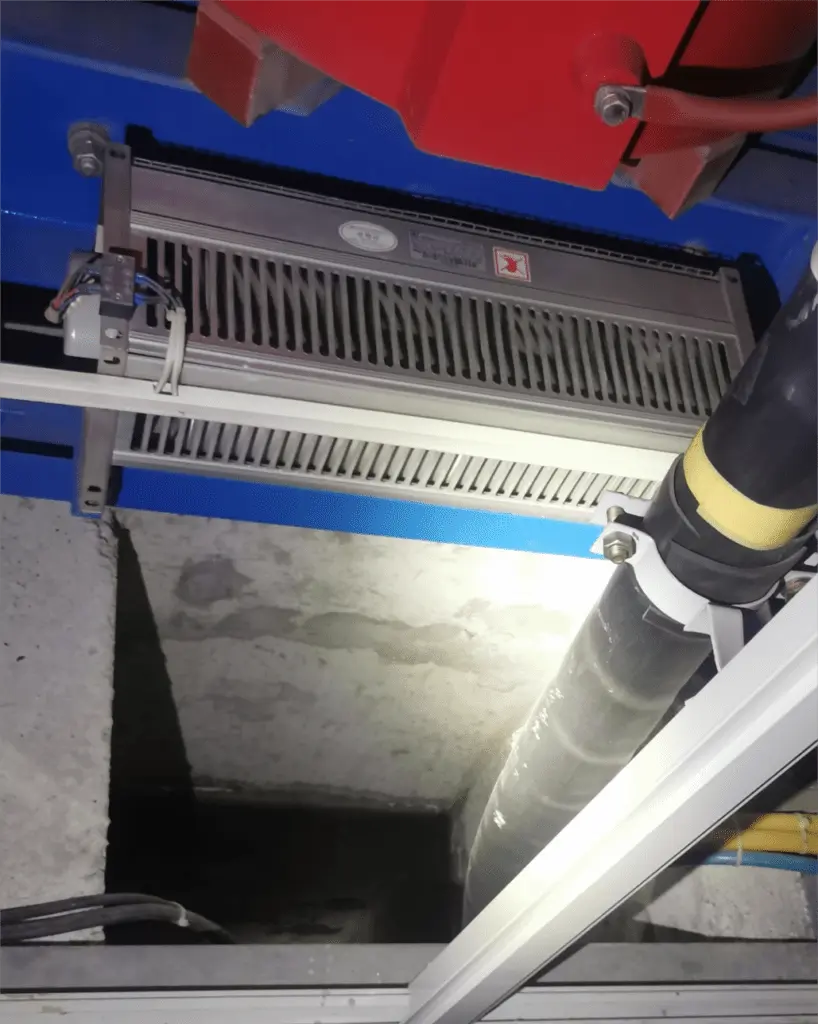

Installation
1、The connecting bolts on the transformer are not tightened properly, causing heat and damage during long-term operation.

2、The safety insulation distance does not meet the requirements and discharge occurs during operation.
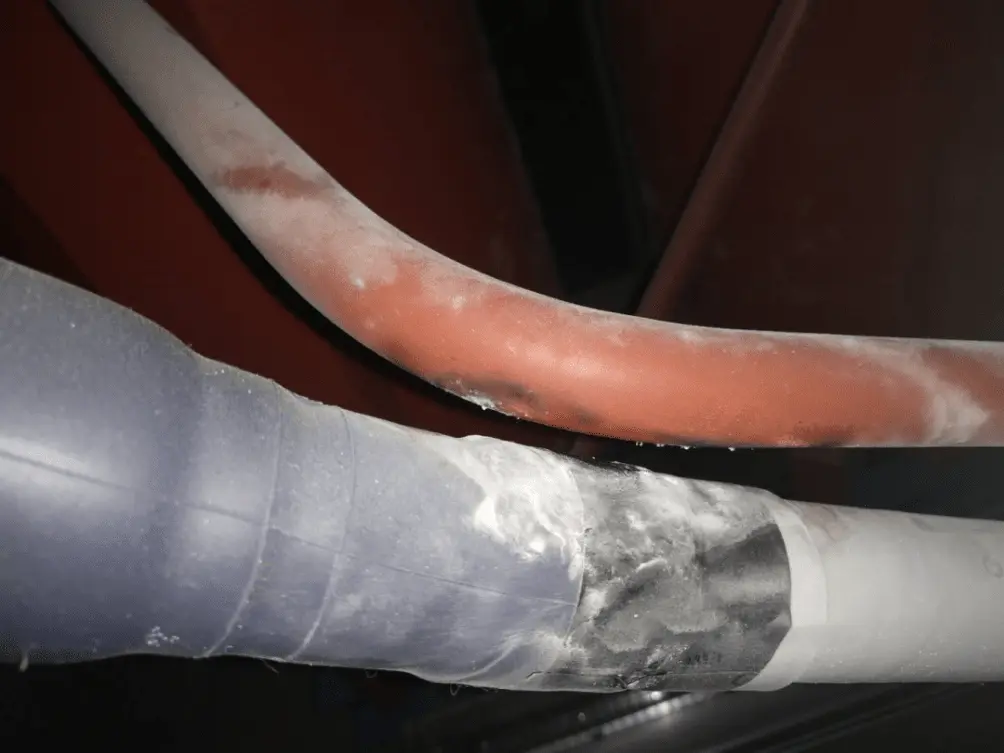
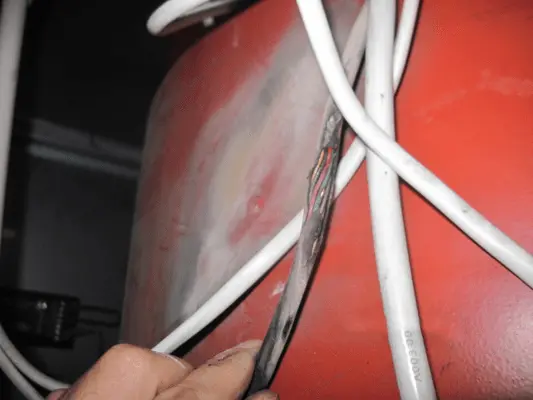
Analysis and solutions of several reasons causing high noise of dry-type transformers on site
Transformer noise is an inherent characteristic of transformer operation. Each product has been strictly tested for sound level by relevant national standards before leaving the factory. However, with the improvement of users’ environmental awareness, complaints about transformer noise on site are gradually increasing, and the noise reflected is often much larger than the factory test data. According to some on-site processing experience, the following reasons are analyzed for reference:
1. Voltage problem
Reason: High voltage will cause the transformer core to be overexcited, the sound will increase and become sharp, and it will directly and seriously affect the noise of the transformer. Judgment method: Look at the low-voltage output voltage, one is to look at the voltmeter on the low-voltage cabinet, and the other can be directly measured and compared with a multimeter. Solution: At present, the 10KV voltage is generally high. According to the output voltage on the low-voltage side, the tapping gear should be placed in a suitable gear at this time. Under the premise of ensuring the quality of low-voltage power supply, try to adjust the high-voltage tap upward (lower the low-voltage output voltage) to eliminate the over-excitation phenomenon of the transformer and reduce the noise of the transformer. Remember: the gear adjustment must be performed by professionals.
2. Resonance of fans, wiring poles, housings, and other parts. Cause: The resonance of fans, housings, and other parts will generate noise, which is generally mistaken for transformer noise. Judgment method:
1) Housing: Press the aluminum plate (or steel plate, stainless steel plate) of the housing by hand to see if the noise changes. If it changes, it means that the housing is resonating.
2) Fan: Manually start the fan to see if the noise changes. If it changes, it means that the fan is resonating.
3) Other parts (such as wiring poles, and fan brackets): You can use a dry long wooden stick to push it to see if the noise changes. If it changes, it means that the parts are resonating. Solution: 1) Whether the aluminum plate (or steel plate, stainless steel plate) of the housing is loose, it may be deformed during installation. You need to tighten the screws of the housing, fix the aluminum plate of the housing, and correct the deformed part. 2) Check whether the fan is loose. You need to tighten the fastening bolts of the fan. Put a small piece of rubber between the fan and the fan bracket to solve the fan vibration problem. 3) If the transformer parts are loose, they need to be fixed.
3. Installation problem: improper installation will aggravate the vibration of the transformer and amplify the noise of the transformer. Judgment method: 1) The foundation of the transformer is not firm or flat, or the mesh panels at the bottom vibrate. 2) Using channel steel to erect the transformer will increase the noise. Solution: 1) The installation unit shall modify the original installation method. 2) A seismic isolation pad can be added under the transformer to solve some noise.
4. The influence of the installation environment: The operating environment affects the noise of the transformer, and an unfavorable environment increases the noise of the transformer. Judgment method: 1) The transformer is too close to the wall, less than 1 meter. The transformer is placed in the corner, and the wall reflection noise is superimposed on the transformer noise, which increases the noise. Solution: Some sound-absorbing materials can be appropriately installed indoors.
5. The cause of busbar bridge vibration: When the load is high, a large current passes through the busbar, and the leakage magnetic field causes the busbar to vibrate. The vibration of the busbar bridge will seriously affect the noise of the transformer, increase the noise of the transformer, and it is difficult to judge. Generally, users and installation units will mistake it for the noise of the transformer. Judgment method: 1) The noise changes with the load size. 2) Use a wooden stick to push the busbar bridge. If the noise changes, it is considered that the busbar bridge is resonating. 3) If the busbar vibrates in the bridge, you may need to open the busbar bridge cover when the power is off to check whether the busbar is fixed. Solution: 1) The main condition for destroying the resonance of the busbar bridge is to tighten or loosen the hanger screws. 2) Open the busbar bridge cover and fix the busbar. 3) Use a soft connection for low-voltage outlets. 4) Ask the manufacturer of the busbar bridge to solve it.
6. Problems with load properties Cause: The voltage waveform of the transformer is distorted (such as resonance), generating noise. Judgment method: 1) In addition to the noise of the transformer itself, there is also a “click” noise. 2) During operation, the transformer noise will suddenly increase, and then return to normal soon. 3) Check whether the load is equipped with rectifiers and frequency converters. Solution: On the one hand, please ask the user to test the harmonic content and recommend the installation of a detuning device. In addition, it should be noted that even if the detuning device is installed, there is still the possibility of abnormal noise, which may be caused by incomplete elimination.
7. The reason for the lack of phase in the transformer: The transformer cannot be excited normally and generates noise. Solution: 1) The transformer is powered off and check whether the power supply is missing one phase. 2) Check whether the high-voltage fuse of the transformer is blown one phase.
8. The reason for the poor contact: One is caused by poor contact in the high-voltage cabinet. The other is that the knife switch is not closed in place, or the high-voltage current transformer is discharged. Judgment method: The transformer emits intermittent and abnormal noise. Solution: 1) Check the contacts and fuses of the high-voltage cabinet and the entire high-voltage circuit. 2) Ask the high-voltage cabinet manufacturer to check.
9. The reason for the floating potential problem: The clamping channel steel, pressure nail bolts, pull plates, and other parts of the transformer are all painted, and the contact between the parts is not good. Under the action of the leakage magnetic field, the floating potential discharge between the parts will produce a sound. Or the pressure nail bolts have been loose for a long time and discharge to the metal substrate. Judgment method: The suspended potential discharge emits a very slight “squeak, squeak” sound, which can only be heard by listening carefully. Users often mistakenly believe that the transformer’s high voltage or low voltage is discharging. Solution: 1) This discharge will not affect the normal operation of the transformer. 2) During the power outage inspection, the paint on the poor contact area can be scraped off to ensure good contact between the transformer components, or the position that is loose and causes suspended discharge can be tightened.
10. When the low-voltage line is grounded or short-circuited, or when a large load is put into operation when the low-voltage line is grounded or short-circuited, the transformer will also make a rumbling sound; the closer the short-circuit point is to the transformer, the more obvious the sound.
